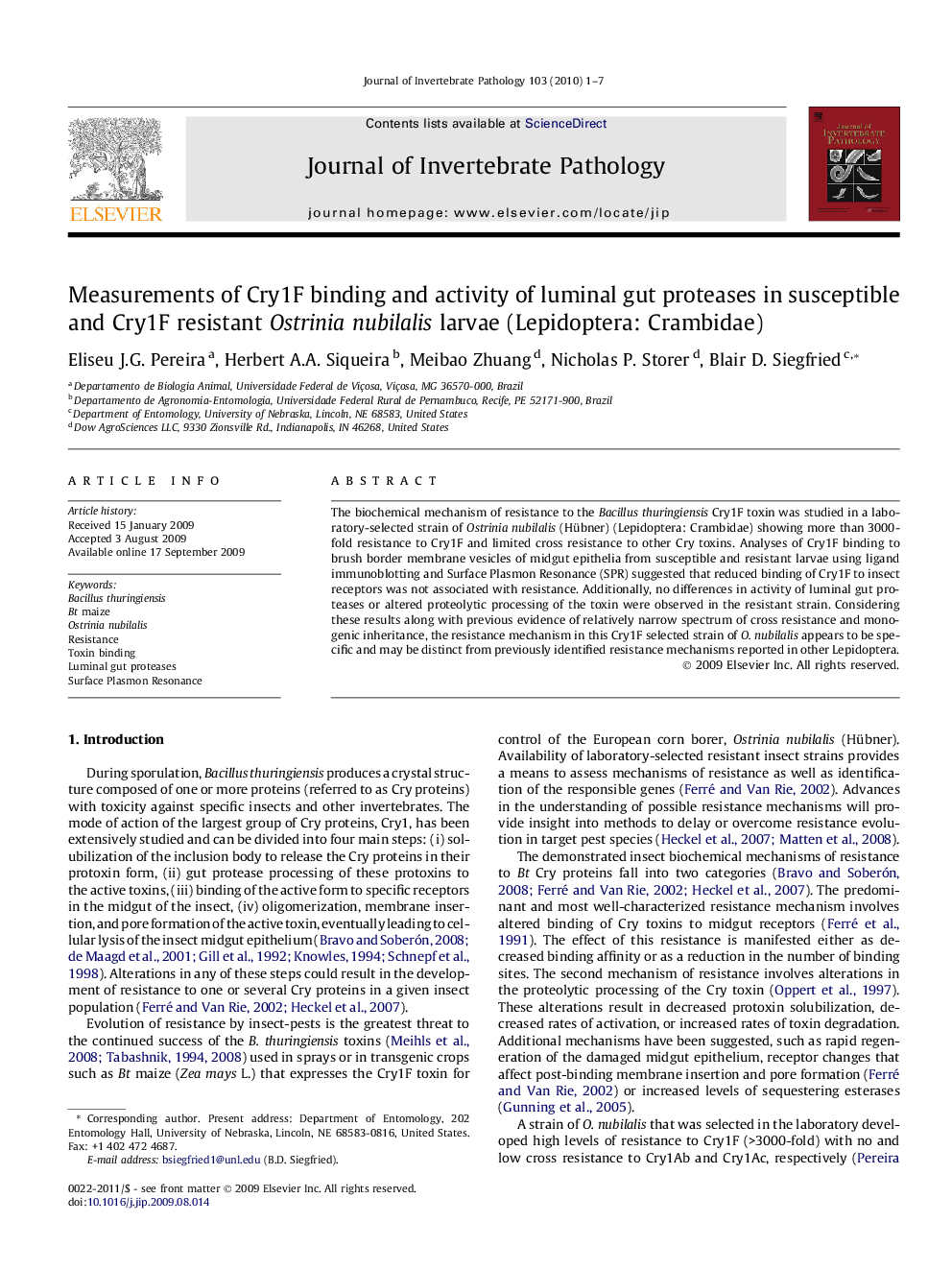| Article ID | Journal | Published Year | Pages | File Type |
|---|---|---|---|---|
| 4558311 | Journal of Invertebrate Pathology | 2010 | 7 Pages |
The biochemical mechanism of resistance to the Bacillus thuringiensis Cry1F toxin was studied in a laboratory-selected strain of Ostrinia nubilalis (Hübner) (Lepidoptera: Crambidae) showing more than 3000-fold resistance to Cry1F and limited cross resistance to other Cry toxins. Analyses of Cry1F binding to brush border membrane vesicles of midgut epithelia from susceptible and resistant larvae using ligand immunoblotting and Surface Plasmon Resonance (SPR) suggested that reduced binding of Cry1F to insect receptors was not associated with resistance. Additionally, no differences in activity of luminal gut proteases or altered proteolytic processing of the toxin were observed in the resistant strain. Considering these results along with previous evidence of relatively narrow spectrum of cross resistance and monogenic inheritance, the resistance mechanism in this Cry1F selected strain of O. nubilalis appears to be specific and may be distinct from previously identified resistance mechanisms reported in other Lepidoptera.
